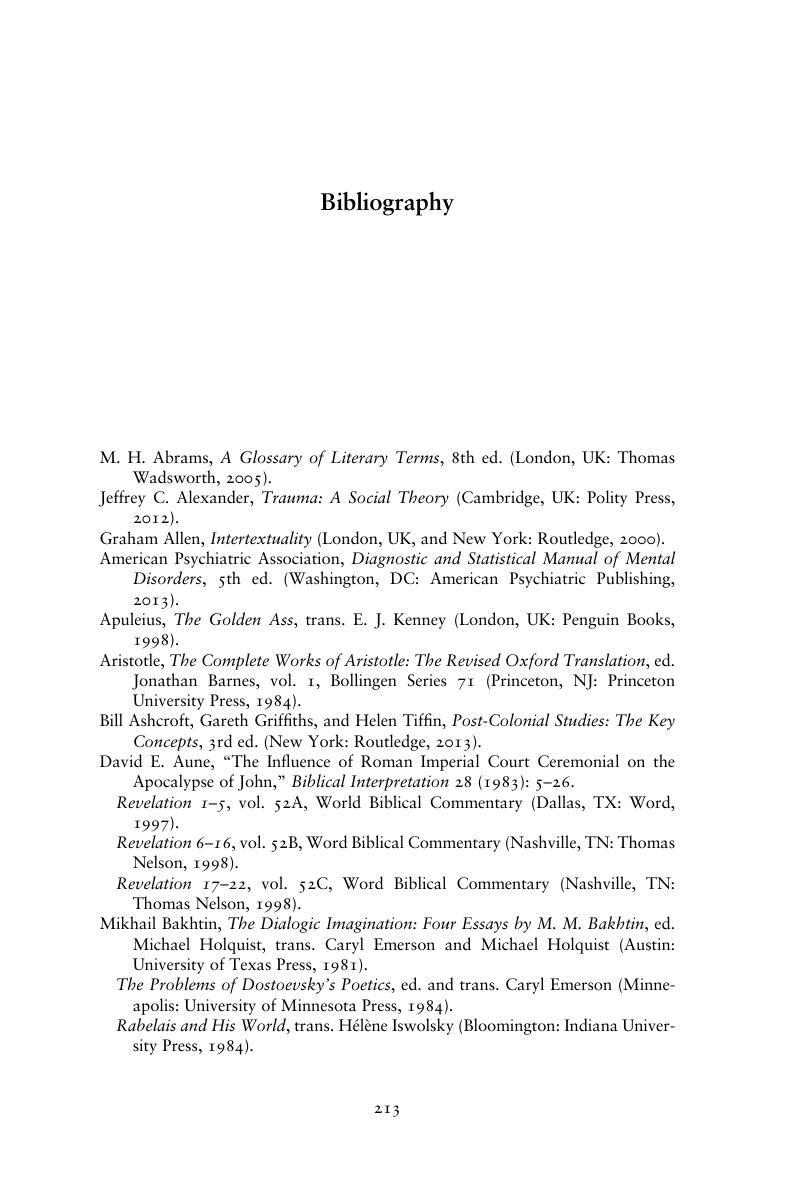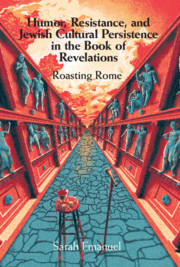Book contents
- Humor, Resistance, and Jewish Cultural Persistence in the Book of Revelation
- Humor, Resistance, and Jewish Cultural Persistence in the Book of Revelation
- Copyright page
- Dedication
- Epigraph
- Contents
- Acknowledgments
- A Note on the Cover
- Introduction
- 1 Backgrounds, Backdrops, and Other Important Starting Points
- 2 Survival of the Humorist: Reading for Trauma, Reading for Humor
- 3 The Comic Truth: Claiming a Jewish Cultural Self through Humor
- 4 The Trick Revealed
- 5 I Pledge Allegiance to the Lamb
- Conclusion
- Bibliography
- Index
- References
Bibliography
Published online by Cambridge University Press: 12 December 2019
- Humor, Resistance, and Jewish Cultural Persistence in the Book of Revelation
- Humor, Resistance, and Jewish Cultural Persistence in the Book of Revelation
- Copyright page
- Dedication
- Epigraph
- Contents
- Acknowledgments
- A Note on the Cover
- Introduction
- 1 Backgrounds, Backdrops, and Other Important Starting Points
- 2 Survival of the Humorist: Reading for Trauma, Reading for Humor
- 3 The Comic Truth: Claiming a Jewish Cultural Self through Humor
- 4 The Trick Revealed
- 5 I Pledge Allegiance to the Lamb
- Conclusion
- Bibliography
- Index
- References
Summary

- Type
- Chapter
- Information
- Humor, Resistance, and Jewish Cultural Persistence in the Book of RevelationRoasting Rome, pp. 213 - 229Publisher: Cambridge University PressPrint publication year: 2020



